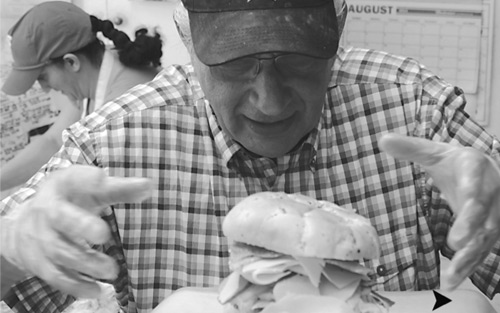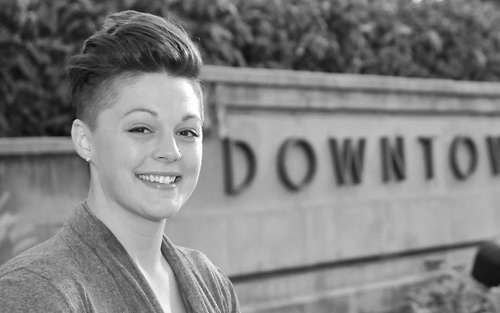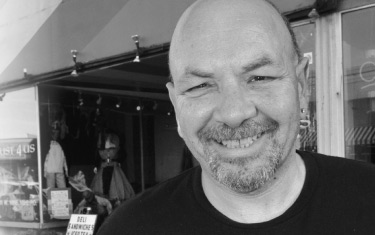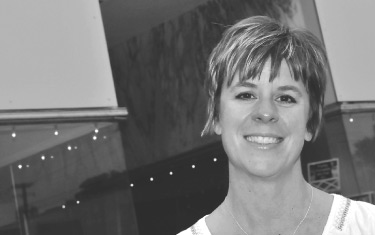by Jeffy Lilly | Photo ©2014 Ed Abeska
Most students look forward to down time when their daily studies are done; evenings and weekends spent watching TV, console gaming, hanging around.
A group of seven students from various schools in Detroit and surrounding areas decided to do something a bit different. How about taking a stock, street-legal gasoline-powered dune buggy and convert it to run on DC electric power?
Sponsored by the U.S. Army Tank Automotive Research Development and Engineering Center (TARDEC) and Next Energy (Next Energy donated lab space in their downtown facility for the students to use), coordinated by Heroes Alliance (a nonprofit coalition of concerned residents and businesses dedicated to supporting youth), assisted by experts at universities like Michigan Tech and corporations like Nissan, this was no tinker-toy operation. The students were in charge of everything from budgeting to crunching numbers, from construction and programming to media relations. They had to put math, physics, and programming skills to work in order to understand and plan their course of action. They learned to use CAD (Computer Aided Design) programs to design parts.
And, of course, they had to turn the wrenches and invest the sweat to make it all go. In all, the students put over 400 hours each into the project.
There were setbacks, of course. The students wanted to use Lithium-ion batteries for their low weight and high power, but these were way beyond their budget. So they settled for stock lead-acid car batteries. The dune buggy assembly instructions were in a foreign language, and it took a while before they realized that some of their troubles were caused by the roll cage being installed backwards. Like all good engineers, though, the students used their brains and good advice from teachers and collaborators to stomp out the bugs.
Kalen Riley, a freshman at University High School in Ferndale, was part of the team, specializing in mechanical and software aspects of the project. He’s planning to attend Michigan Tech after graduation, and has a campus visit already planned. He bubbled with smarts, energy, and a mature confidence as he told me of his future plans to own a business that specializes in producing electric cars.
“Like Tesla Motors?” I asked. He nodded and smiled in a way that told me that, yes, Tesla was pretty good, but he planned to take it to the next level.
“We’re going to convert the buggy to solar power next.” He told me. The team’s next big project, pending sponsorship, could be building a solar boat, which would take advantage of the sunny conditions people usually choose to go boating in, and the limited amount the engine is used. “The sun charges it, and it’s ready the next day.” Kalen says. Parked out on the water, away from any shadows, the advantages are obvious.
I asked Kalen why engineering is important. “It’s the future,” He returned immediately. “It drives things like transportation, that get us around.” He also pointed to a changing climate. “Engineering gives us the keys to survive.” He said solemnly.
In the Next Energy presentation hall, up on stage, the students sit in a loose semicircle, waiting for the presentation to begin. Some of them practice their speeches one last time, or check on the slide show. There’s nervousness, but there’s confidence, too, and a help- ing of kids just being kids. Talk, laughter. One of the girls grabs the microphone and does some impromptu beat-boxing. Then the audience filters in. Clothes are groomed, deep breaths taken. The lights dim, and the presentation begins. Each student speaks of their contributions to the project, what they learned, and how it all works together.
There are a few glitches. The laptop doesn’t behave. The slide show doesn’t pause. The microphone cuts out. But with a smile and inner serenity and a bit of know-how, the problems get ironed out and the presentation goes on. It’s a microcosm of the whole project, and perhaps of life itself.
Rest easy, folks. In the hands of young people like these, the future looks very bright indeed.
(Kalen and his team are currently seeking corporate sponsorships to fund their electric buggy’s conversion to solar power and enter it in the High School Solar Car Challenge in Texas next year. If you have contacts or other information that can help, please contact team Run DC via one of the links below.)
NextEnergy is a 501(c)(3) nonprofit organization established in 2002 to drive advanced energy investment and job creation in Michigan. Visit them on the web at www.nextenergy.org
Heroes Alliance aims to support youth through innovative programs and community collaboration. See some of the great things they do at http://heroesalliance.net
Visit the team’s website at http://rundc.weebly.com
If some happened with our health, we believe there is a solution to any maladies in a preparation. What medicines do patients purchase online? Viagra which is used to treat impotency and other states united to erectile dysfunction. Learn more about “sildenafil“. What men talk about “viagra stories“? The most substantial aspect you should look for is “sildenafil citrate“. Such problems commonly signal other problems: low libido or erectile malfunction can be the symptom a strong heartiness problem such as core trouble. Causes of sexual malfunction include injury to the penis. Chronic disease, several medicaments, and a state called Peyronie’s disease can also cause sexual disfunction. Even though this medicine is not for use in women, it is not known whether this medication passes into breast milk.





